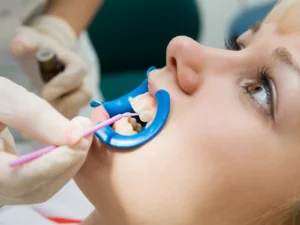Abstract
Objectives
To develop a content-valid set of items to characterize different types of topical fluoride hesitancy among caregivers. We will use this information to develop and test tailor-made interventions directed to caregivers with varied types and levels of topical fluoride hesitancy, to ultimately improve child oral health.
Methods
Caregivers participated in three study activities, in the following order: (1) semi-structured concept elicitation interviews (n =?56), (2) cognitive interviews (n =?9), and (3) usability interviews (n =?3). Interviews were conducted via telephone and audio-recorded and transcribed for qualitative analysis. Twelve pediatric dental providers and researchers participated in item review. An assessment of reading level of items was made with goal of 6th grade reading level or less.
Results
Based on elicitation interviews, we initially developed 271 items, which the investigative team evaluated for conceptual clarity, specificity to topical fluoride hesitancy, and sensitivity to potential interventions. After four rounds of review and cognitive interviews, we retained 33 items across five previously identified domains. Changes after cognitive interviews included item revision to improve comprehension and item re-ordering to avoid order effects. Changes after usability testing including clarification regarding referent child for families with multiple children. The reading level of the item pool is grade 3.2.
Conclusions
The resulting 33-item fluoride hesitancy item pool is content valid and will address an important need for identifying and addressing topical fluoride hesitancy in the context of dental research and clinical practice. Next steps include psychometric evaluation to assess scale and test–retest reliability and construct validity.

*Original full-text article online at: https://onlinelibrary.wiley.com/doi/10.1111/jphd.12558
